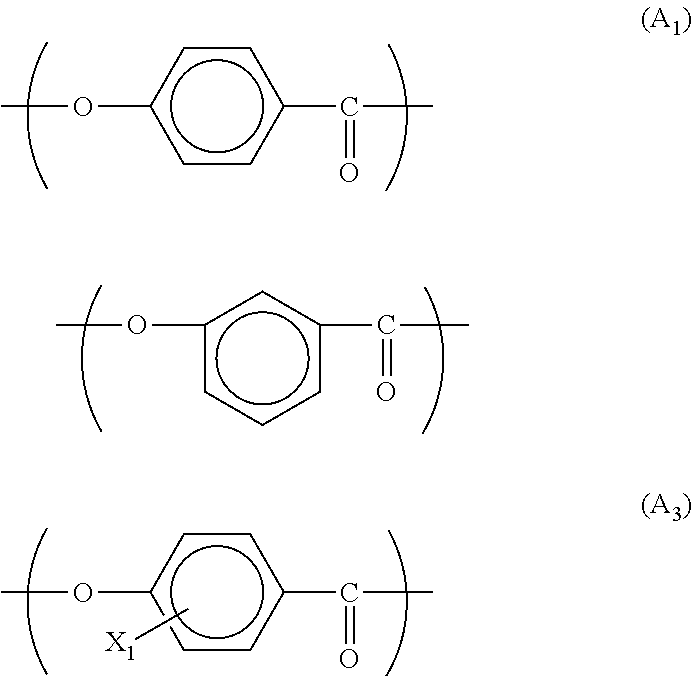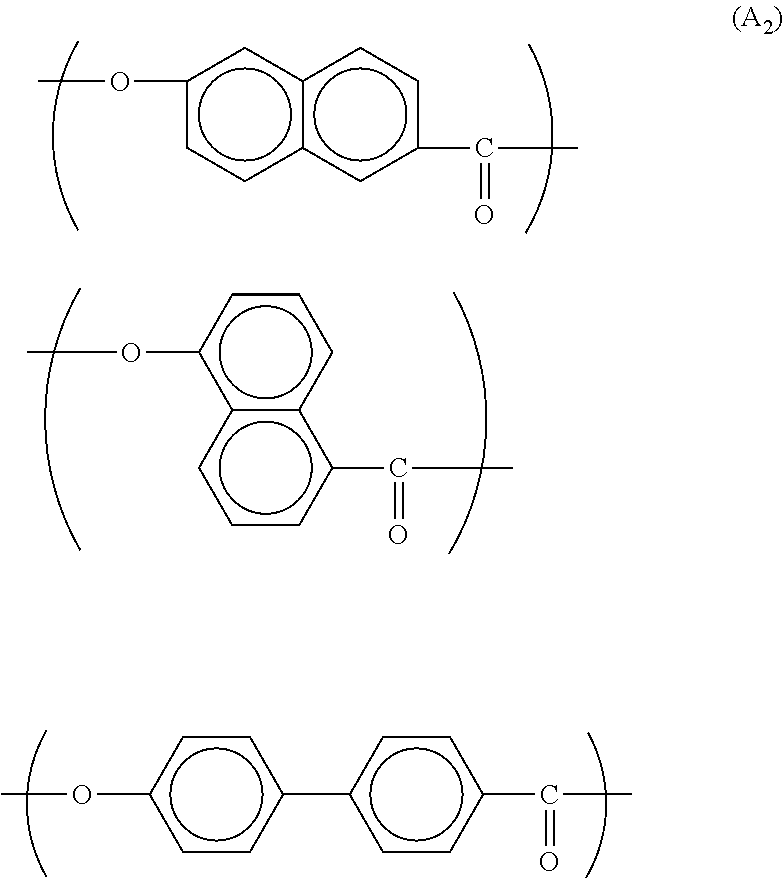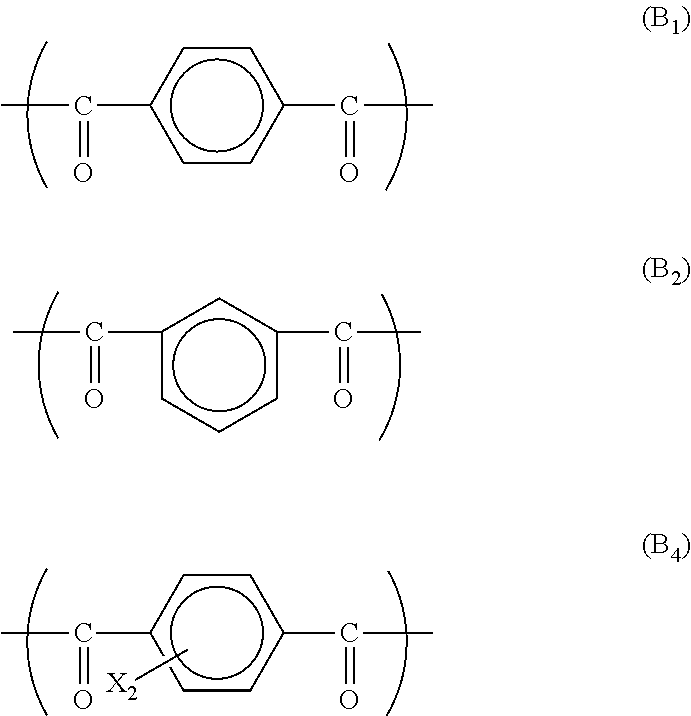Liquid crystal polyester resin composition for camera module
a polyester resin and composition technology, applied in the field of material for camera modules, can solve the problems of reducing product pass rate and product performance, affecting product performance, and occurrence of powders (particles), and achieves the effects of good rigidity, good heat resistance, thin-wall workability and mechanical strength, and excellent surface transferability
- Summary
- Abstract
- Description
- Claims
- Application Information
AI Technical Summary
Benefits of technology
Problems solved by technology
Method used
Image
Examples
examples
[0064]The present invention will now be described in more detail using the following examples and comparative examples. However, the present invention is not limited to these examples.
(Testing Methods)
[0065]The methods for measuring and evaluating the performance of the thermotropic liquid crystal polyester resin composition in the examples and comparative examples and the molded articles obtained therefrom are illustrated below.
(1) Measurement of Melt Viscosity
[0066]The melt viscosity of the thermotropic liquid crystal polyester resin composition was determined as the apparent viscosity at 370° C. by measuring the apparent viscosity while heating at a constant temperature increase rate of +4° C. / minute from 300° C. at a shear rate of 100 sec−1 using a capillary rheometer manufactured by Intesco Co., Ltd. (Model 2010) and also using a capillary die having a diameter of 1.00 mm, a length of 40 mm, and an inflow angle of 90°. The obtained value was taken as the test value. In the test...
production example
Production of Thermotropic Liquid Crystal Polyester C
[0075]A pre-polymer was obtained by the same method as for the thermotropic liquid crystal polyester A.
[0076]The obtained pre-polymer was subjected to solid-phase polymerization using a rotary kiln manufactured by Takasago Industry Co., Ltd. The pre-polymer was placed in the kiln. The pre-polymer was then held for 11 hours at a rotation speed of 2 rpm under a nitrogen flow at a flow rate of 16 Nm3 / hr while increasing the heater temperature over 1 hour from room temperature to 350° C. It was confirmed that the resin powder temperature in the kiln had reached 300° C., and then the heating was stopped. The resin powder was cooled over 4 hours while rotating the kiln to obtain a powdery liquid crystal polyester, which had a melting point of 370° C. and a melt viscosity of 140 Pa·S.
[0077]The inorganic fillers used in the following examples are shown below.
(1) Talc: “MS-KY” manufactured by Nippon Talc Co., Ltd., (number average particle...
example 1
[0078]Using a ribbon blender, 100 parts by mass of the powdery liquid crystal polyester A obtained in the above-described production example, 34 parts by mass of talc, 34 parts by mass of glass fiber A, and 3 parts by mass of carbon black were mixed. The resultant mixture was dried for 2 hours at 150° C. in an air oven. The dried mixture was melt kneaded at an extrusion rate of 140 kg / hr using a twin-screw extruder (PCM-30, manufactured by Ikegai Co., Ltd.) having a cylinder diameter of 30 mm with the cylinder maximum temperature set to 380° C. to obtain a pellet of the intended liquid crystal polyester resin composition. Using the obtained pellet, the various physical properties were measured by the above-described testing methods. The results are shown in Table 1.
PUM
| Property | Measurement | Unit |
|---|---|---|
| deflection temperature | aaaaa | aaaaa |
| deflection temperature | aaaaa | aaaaa |
| number average fiber diameter | aaaaa | aaaaa |
Abstract
Description
Claims
Application Information
 Login to View More
Login to View More - R&D
- Intellectual Property
- Life Sciences
- Materials
- Tech Scout
- Unparalleled Data Quality
- Higher Quality Content
- 60% Fewer Hallucinations
Browse by: Latest US Patents, China's latest patents, Technical Efficacy Thesaurus, Application Domain, Technology Topic, Popular Technical Reports.
© 2025 PatSnap. All rights reserved.Legal|Privacy policy|Modern Slavery Act Transparency Statement|Sitemap|About US| Contact US: help@patsnap.com



